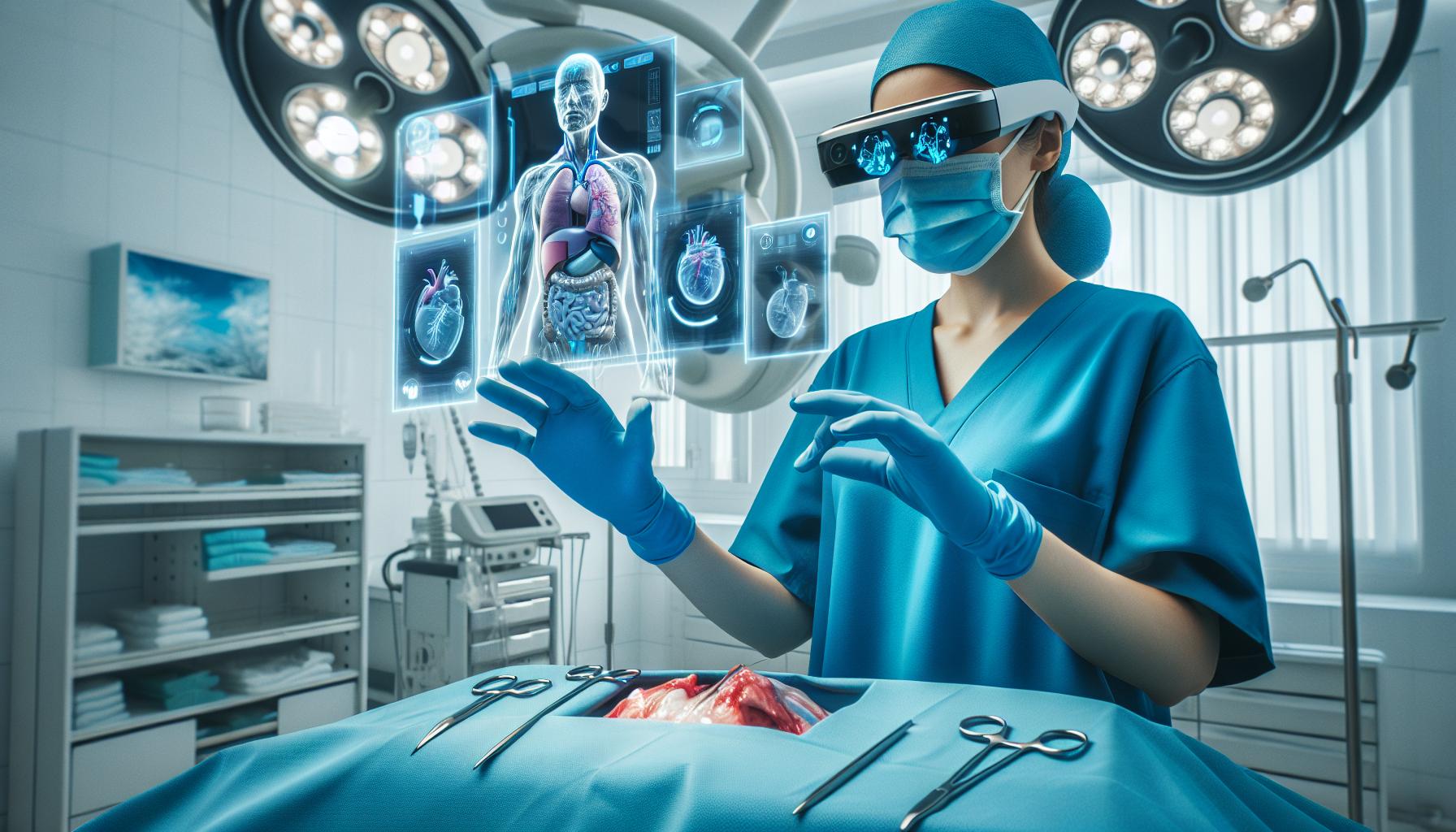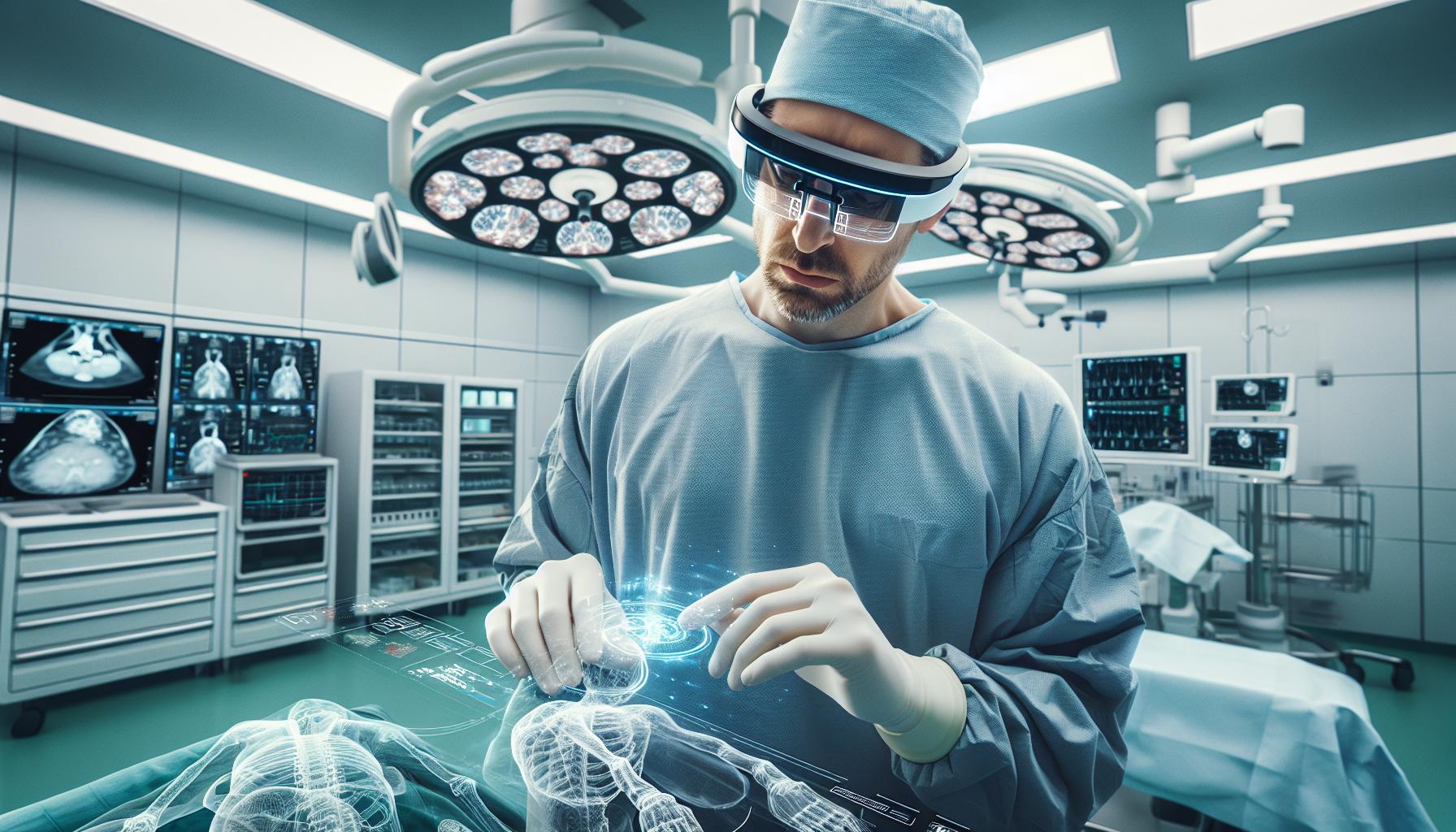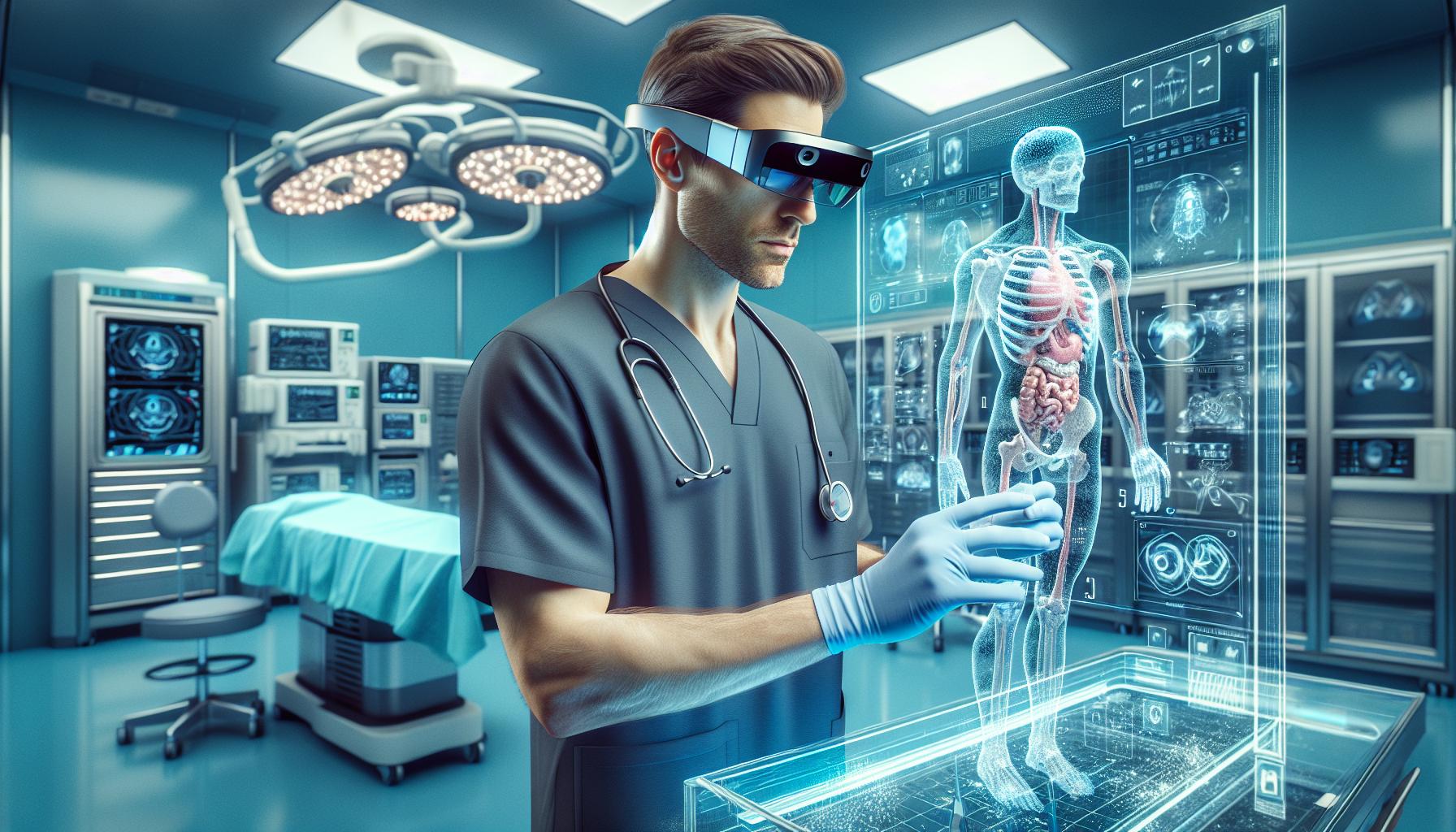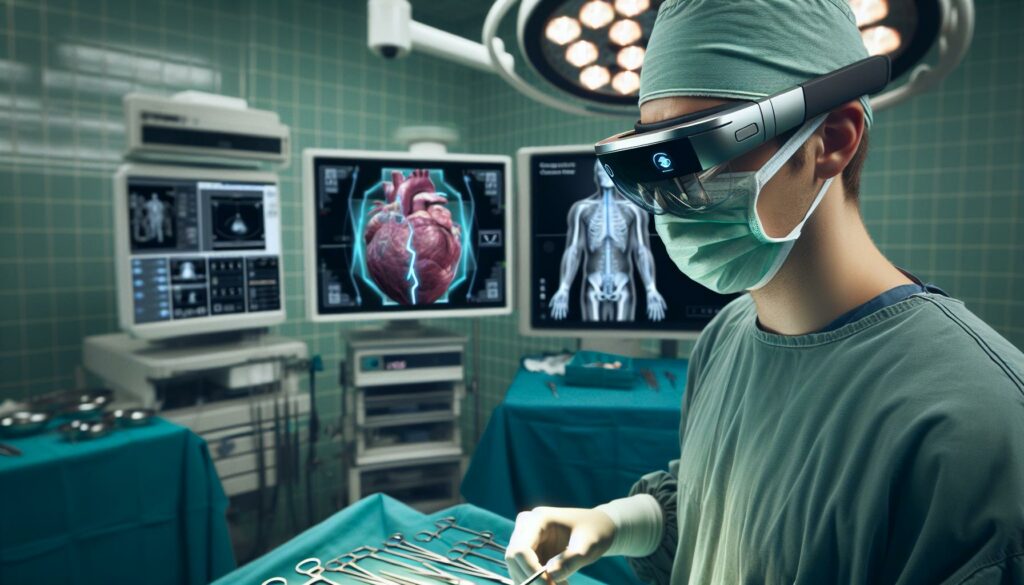Imagine a world where doctors can literally see inside your body without the need for a scalpel. Welcome to the realm of augmented reality in medicine, where the ordinary meets the extraordinary. This cutting-edge technology is transforming how healthcare professionals diagnose and treat patients, making once-complex procedures feel like a scene from a sci-fi movie.
With augmented reality, medical training is no longer confined to textbooks and lectures. Surgeons can practice intricate procedures in a virtual environment, reducing risks and enhancing precision. It’s like giving a superhero cape to every healthcare provider, allowing them to save the day—one augmented operation at a time. As this technology continues to evolve, it promises to revolutionize patient care and make hospital visits a little less daunting. Who knew the future of medicine could be this cool?
Augmented Reality Medical
Augmented reality (AR) technology enhances medical practice by overlaying digital information onto the real world. Surgeons can visualize anatomy in real time during operations, leading to improved decision-making and outcomes. Patient-specific data, such as images from CT or MRI scans, can be displayed directly onto a patient’s body, facilitating precise surgical interventions.
Medical training benefits significantly from AR applications. Students practice in simulated environments, which emulate complex scenarios without risks. They gain experience through interactive features that provide feedback and analysis, promoting skill advancement. With AR, educators can demonstrate procedures clearly, enriching the learning experience.
Patient care experiences transform with AR’s capabilities. Medical professionals use this technology to explain conditions and treatment plans visually. Patients often feel more engaged when they can see 3D representations of their health issues. Enhanced communication reduces anxiety and helps build trust in healthcare providers.
Cost efficiency remains a vital aspect of adopting AR in healthcare. Hospitals can decrease surgical errors, which often lead to additional expenses, by utilizing AR technology for training and operations. Long-term savings occur through improved patient outcomes and streamlined processes.
Thus, augmented reality’s role in medicine is rapidly growing, enabling better visualization, enhanced training, and improved patient communication. The technology’s potential in transforming healthcare practices continues to unlock new possibilities, shaping the future of medicine.
Applications Of Augmented Reality In Medicine

Augmented reality significantly enhances multiple aspects of medical practice. It provides innovative solutions for surgical procedures and educational settings.
Surgical Visualization
Surgeons benefit from augmented reality medical as it overlays critical digital information during operations. Enhanced visualization of 3D anatomy allows for more precise incisions. Patient-specific data from imaging scans appears directly on the surgical site. This immediacy decreases the likelihood of errors, ensuring safer procedures. Medical professionals report improved decision-making processes, directly linked to AR’s integration during surgeries.
Medical Training and Education
Medical students gain valuable experience through augmented reality simulations. These virtual environments mimic real-life scenarios, crucial for skills development. Realistic training allows students to practice complex procedures without patient risk. Interactive elements enhance understanding of anatomical structures. Feedback from instructors becomes immediate, reinforcing learning objectives. As a result, the overall quality of medical education improves, preparing students for real-world challenges.
Benefits Of Augmented Reality In Healthcare

Augmented reality (AR) offers numerous advantages within the healthcare sector, enhancing patient experiences and improving procedural accuracy.
Enhanced Patient Engagement
AR significantly improves patient engagement by visually illustrating medical conditions and treatment options. This technology helps medical professionals create interactive educational experiences, enabling patients to comprehend complex information with ease. Patients better understand their health situations when they can visualize their anatomy and treatment plans directly on their bodies. Such visual aids foster clearer communication between doctors and patients. As a result, it leads to increased trust, satisfaction, and proactive involvement in care decisions. Engaging patients through AR reduces their anxiety and enhances their overall healthcare experience.
Improved Accuracy in Procedures
AR boosts precision in medical procedures by overlaying critical digital information within the surgeon’s field of vision. Real-time data from imaging technologies, such as CT and MRI scans, superimposes onto the patient’s body, guiding surgeons in making informed decisions. Surgeons can make incisions with greater accuracy when they receive immediate access to anatomical details. This enhancement minimizes surgical errors and lowers the risk of complications. Enhanced visualization allows for a more precise approach to complex procedures. Consequently, the integration of AR in surgery leads to improved outcomes and patients’ long-term health.
Challenges And Limitations

Augmented reality in medicine faces several challenges that hinder its full potential. These include technological barriers and regulatory issues that must be addressed for wider adoption.
Technological Barriers
Technology presents significant limitations for augmented reality applications in healthcare. Many AR systems require advanced hardware, which may not be readily available in all medical facilities. Dependence on reliable high-speed internet affects performance, especially in remote areas. Additionally, integration with existing electronic health record systems poses compatibility challenges. Technical training for medical professionals remains essential since user-friendly interfaces are not always a guarantee. Furthermore, issues like latency during AR displays can impede real-time decision-making, leading to hesitance in critical situations.
Regulatory Issues
Regulatory constraints heavily influence the implementation of augmented reality in healthcare. Compliance with medical device regulations presents a substantial hurdle, often demanding lengthy approval processes. Various governing bodies assess AR systems for safety and effectiveness, which complicates market entry for innovators. Concerns regarding patient privacy and data security arise as AR applications sometimes rely on sensitive personal information. Additionally, lack of standardization across different regions can create challenges for developers aiming for widespread use. Overcoming these regulatory issues is crucial for integrating augmented reality into everyday medical practice.
Future Trends In Augmented Reality Medical
Augmented reality is set to evolve rapidly, impacting various facets of healthcare. Innovations may focus on personalized treatment plans, utilizing AR to tailor interventions based on individual patient data. Advanced machine learning algorithms could enhance AR’s capability to interpret complex imaging, making diagnostic procedures faster and more accurate.
Surgical training could become even more immersive. AR may allow trainees to interact with 3D holograms of anatomy, providing a hands-on experience that complements traditional learning. Enhanced simulations with real-time feedback can further refine surgical skills, leading to better-prepared professionals.
Patient monitoring systems might integrate AR tools for real-time health assessment. Healthcare providers could project vital signs and other metrics directly onto a patient, ensuring immediate access to critical information. This integration enables healthcare professionals to make instantaneous decisions during consultations or emergencies.
Collaboration among medical teams may increase through AR technology. Virtual consultation capabilities can allow specialists across different locations to participate in a procedure, sharing insights and expertise. This can enhance surgical outcomes and improve treatment strategies.
Regulatory frameworks will likely adapt to the growth of AR in medicine. Streamlined processes for approving AR technologies might emerge, helping to facilitate quicker access to cutting-edge tools for healthcare providers. Addressing patient privacy concerns will remain critical, ensuring that data security measures are robust in these evolving systems.
Ultimately, the future of augmented reality in medicine promises significant advancements. Enhanced training, improved patient care, and increased collaboration are expected to transform the medical landscape, driving better health outcomes and patient experiences.
Surgical Precision
Augmented reality is poised to redefine the landscape of healthcare by enhancing surgical precision and transforming medical education. Its ability to overlay critical information in real time empowers surgeons and fosters a deeper understanding for medical students. As AR continues to evolve, it’s set to improve patient engagement and satisfaction, making medical experiences less daunting.
Despite challenges in implementation and regulation, the potential benefits of AR in medicine are undeniable. Innovations on the horizon promise to further personalize patient care and streamline processes. With ongoing advancements, augmented reality stands to be a cornerstone of future medical practices, ultimately driving better health outcomes and enriching the patient experience.

